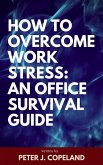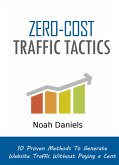What sets this guide apart is its fusion of lab-tested methods (e.g., biofeedback training) with real-world case studies, such as Sweden's six-hour workday trials, showing how individual and societal changes intersect. Structured in three parts, the book progresses from explaining stress biology to teaching actionable tools and advocating for policy shifts. Readers learn to implement micro-recoveries-90-second breathing breaks-or redesign workspaces using sensory modulation principles. The introduction of the Adaptability Quotient helps assess resilience through biological, psychological, and environmental lenses.
By critiquing the wellness industry's reliance on unproven remedies and emphasizing evidence-backed tactics, the book balances scientific rigor with relatable examples. Its interdisciplinary lens-linking urban design to amygdala activity or workplace policies to cortisol levels-makes it a standout resource for professionals and policymakers alike, offering not just survival tactics but a blueprint for sustained vitality.
Dieser Download kann aus rechtlichen Gründen nur mit Rechnungsadresse in A, B, BG, CY, CZ, D, DK, EW, E, FIN, F, GR, H, IRL, I, LT, L, LR, M, NL, PL, P, R, S, SLO, SK ausgeliefert werden.









